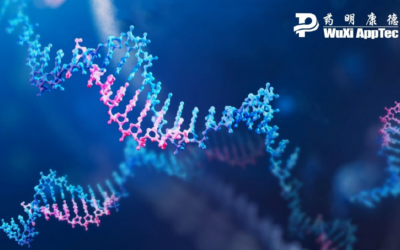Encountering challenges while developing a new drug is expected, but drug developers who understand the pitfalls are often better prepared to navigate them and emerge successfully.
Nonclinical safety assessment is a highly complex and molecule-specific process, but you can take steps to mitigate some surprises and submit a robust Investigation New Drug (IND) application or Clinical Trial Application (CTA). When preparing a nonclinical toxicology strategy, ask yourself these five questions to put your biotherapeutic on the right track and set in motion a successful program.
When should I bring in a toxicology consultant?
Seeking a toxicology consultant’s advice is a decision that many developers overlook, especially when the team doesn’t have in-house toxicology expertise. The short answer to the question of when to bring in a toxicology consultant is as soon as possible. Even during drug discovery, it’s crucial to consider the nonclinical toxicology strategy for your product, including important decisions about nonclinical species selection and selection and engagement of a laboratory testing partner to conduct the in vivo toxicology studies. A toxicology consultant has the expertise to provide the appropriate scientific and regulatory advice and help build the overall timeline for a toxicology program from early discovery to IND submission.
Nonclinical species selection, for example, is one of the crucial early decisions that developers need to make for each biotherapeutic program. A toxicology consultant can help determine early in the program what in vitro and in vivo studies need to be conducted to identify the pharmacologically relevant species and to meet regulatory expectations to avoid surprises or unforeseen pitfalls. This is a complex process requiring data from both rodent and non-rodent species, and not having the right data can cause delays in your program if you don’t consider it early in the development program.
Which toxicology studies need to be conducted under GLP regulations?
Regulatory guidelines require in vivo pivotal toxicology studies to comply with Good Laboratory Practice (GLP) standards. Pivotal in vivo toxicology studies are usually the last studies conducted to support an IND filing and first-in-human (FIH) clinical trials. Early exploratory toxicology studies and dose range-finding studies are typically not conducted under GLPs. It is always best to conduct all assays associated with GLP toxicity studies under GLP, but in some cases, an exception can be made, and an assay can be qualified but not conducted under GLP (i.e., specialty immunophenotyping or cytokine endpoints). These exceptions will be noted in study protocols and final reports submitted to health authorities.
In vivo pharmacokinetics (PK) studies, on the other hand, are not required to be conducted under GLPs. Pharmacokinetic/toxicokinetic assessments (drug concentration and anti-drug antibody [ADA] assays) conducted as part of a GLP toxicity study do require validated assays and must meet GLP standards.
Many in vitro assays that support the safety assessment of a biotherapeutic are not conducted under GLPs, but it is still vital for the assays to be qualified so that health authorities can have confidence in the data they are reviewing. For example, regulators do not require ex vivo human cytokine release assays (i.e., in vitro assays that measure cytokine release from human immune cells) to be conducted under GLPs. However, one in vitro study type commonly performed for protein biotherapeutics that is required to be conducted under GLPs is tissue cross-reactivity (TCR) studies.
Overall, it is always best to ask your toxicology consultant which in vivo or in vitro studies regulators require to be conducted under GLPs and the level of characterization of the drug substance necessary to support non-GLP and GLP studies.
When should I begin work on bioanalytical assays for my biotherapeutic product?
The development of critical bioanalytical reagents and assays is often overlooked as a critical path activity. Bioanalytical assay (PK and ADA assays) method development and qualification to support the nonclinical program should begin well before any PK and toxicology studies start, including any non-GLP studies. It can take several months (i.e., 6 to 9 months or longer is not uncommon) to develop critical reagents (i.e., positive control and capture antibodies for both PK and ADA assays), develop the methods, and then qualify the methods for use on the PK and dose-range finding studies. In addition, the methods need to be further validated to support any GLP toxicology studies.
Results from the bioanalytical assays are essential to help design subsequent toxicology studies and interpret data from these studies. The PK results from nonclinical pharmacology, PK and toxicology studies are also critical in the selection of the starting dose, dosing regimen and dose escalation scheme for the FIH clinical trials.
Will my product IND be reviewed in CDER or CBER, and why does it make a difference?
The U.S. FDA defines which center (CDER or CBER) a product IND is reviewed based on a product’s molecular structure and/or mechanism of action. Understanding the center reviewing your product will help you prepare your submission accordingly. Each center has its own regulatory guidelines, expectations for nonclinical programs, as well as differences in pre-IND interactions.
CDER stands for Center for Drug Evaluation and Research. Biotherapeutics regulated by CDER include most protein-based biotherapeutics, including monoclonal antibodies and their derivatives (i.e., bispecifics and antibody-drug conjugates), fusion proteins, endogenous replacement therapies, and nanoparticles. The primary regulatory guideline supporting the nonclinical development of these types of biotherapeutics is ICH S6(R1): Preclinical Safety Evaluation of Biotechnology-Derived Pharmaceuticals. In addition, ICH S9 and ICH S9 Q&A: Nonclinical Evaluation for Anticancer Pharmaceuticals supports the nonclinical development of small molecules and protein-based biotherapeutics. The main type of interaction that can occur with CDER before an IND filing is the pre-IND meeting, which can be helpful for developers looking for further guidance on the nonclinical, clinical and/or CMC aspects before submission of the IND.
CBER stands for the Center for Biologics Evaluation and Research. Biotherapeutics regulated by CBER include all cell, tissue, and gene therapies, bacterial and viral products, blood and blood products and vaccines. There are many regulatory guidelines supporting the nonclinical development of these diverse products. The major regulatory guideline for nonclinical development of cell and gene therapies is the Preclinical Assessment of Investigational Cellular and Gene Therapy Products.
There are two types of interactions that can occur with CBER before an IND filing: The INTERACT meeting and the pre-IND meeting. The INTERACT meeting replaces what used to be called the pre-pre-IND meeting and can be very useful to receive early feedback on your nonclinical program and CMC strategies from the U.S. FDA on very novel biotherapeutic products. The INTERACT meeting does not require a lot of data or the final clinical candidate to receive feedback. CBER provides valuable guidelines that describe what is in scope for an INTERACT meeting, the necessary meeting package, types of information that should go into the package, and the meeting’s timing. The pre-IND meeting for CBER is similar to the CDER pre-IND meeting and requires that the final clinical candidate is defined and that some nonclinical data has been generated with the clinical candidate.
Understanding which center of the U.S. FDA regulates your product, the associated guidelines and pre-IND meeting processes are critical to planning the overall development strategy for your drug and filing a successful IND application.
What should I consider when filing to multiple agencies?
Filing IND submissions globally requires more testing and more data to fulfill regulatory requirements, but it can also be more cost-efficient and reduce the time it takes to initiate clinical work.
Drug developers looking to file IND packages to multiple regulatory bodies must first decide in which markets they want to initiate clinical work. This decision needs to be made before IND-enabling studies begin so studies can be tailored to specific agency requirements. If this choice is delayed, changing program parameters can be costly, time-consuming and, sometimes, impossible.
One of the most common challenges for drug developers pursuing global IND submissions is insufficient planning. Initiating your global IND submission too late can leave you vulnerable to rushed timelines, gaps in expertise and miscalculated regulatory requirements, all of which can affect the acceptability of an application. Working with the right laboratory testing partner can help you navigate these challenges and make your IND as strong as it can be.
This blog post was created in partnership with Marque Todd, DVM, MS, DABT, President of Renaissance Consulting. Dr. Todd is a nonclinical regulatory toxicology expert specializing in early and late-stage nonclinical regulatory toxicology strategy and program execution for oncology biotherapeutics and small molecules. You can find more information on Marque’s services on her LinkedIn profile.
Learn more about WuXi AppTec’s safety assessment services or contact an expert today.
WuXi AppTec provides a broad portfolio of R&D and manufacturing services that enable companies in the pharmaceutical, biotech and medical device industries worldwide to advance discoveries and deliver groundbreaking treatments to patients. As an innovation-driven and customer-focused company, WuXi AppTec helps our partners improve the productivity of advancing healthcare products through cost-effective and efficient, socially responsible and sustainable solutions – and has received ESG (Environment, Social and Governance) A Ratings from Morgan Stanley Capital International since 2019. With industry-leading capabilities such as R&D and manufacturing for small molecule drugs, cell and gene therapies, and testing for medical devices, WuXi AppTec’s open-access platform is enabling more than 4,200 collaborators from over 30 countries to improve the health of those in need – and to realize our vision that “every drug can be made and every disease can be treated.”


